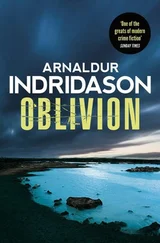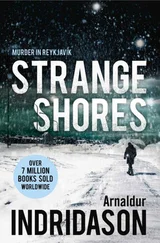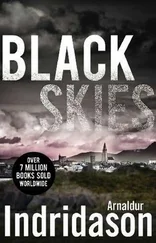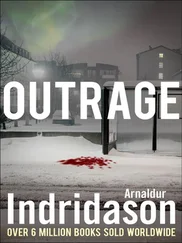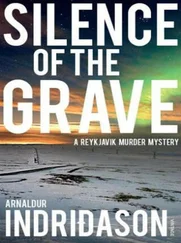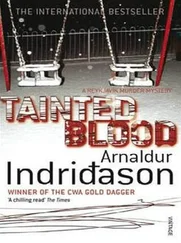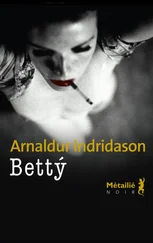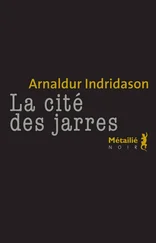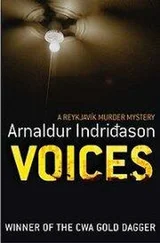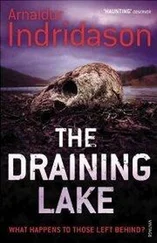There was a silence.
“How did he die?” Eva asked.
“I’ve told you. Bergur died of exposure. He was eight years old. We got separated. I was found. His body was never found. Maybe you did dream about him. It doesn’t matter, don’t get all excited about it. Tell me about yourselves instead. What are you both up to these days?”
“Could he have drowned?” Eva Lind asked.
Erlendur stared at his daughter. She knew he didn’t want to discuss the matter any further but she did not let that deter her. She stared back defiantly. Sindri looked down at the table between them.
“Sindri told me it was one of the theories,” she added, “that he heard when he was out east.”
Sindri raised his eyes. “Loads of people know the story out there,” he said. “People who remember the whole thing.”
Erlendur did not respond.
“What do you think happened?” Eva Lind asked.
Erlendur still did not reply.
“It was dark,” Eva said. “I was in water. At first I thought I was swimming but this was different. I never go swimming. Not since I was at school. But all of a sudden I was in water and it was incredibly cold…”
“Eva …” Erlendur looked pleadingly at his daughter.
“You told me I could tell you my dream another time. Have you forgotten?”
Slowly Erlendur shook his head.
“And a boy came towards me and looked at me and smiled and he immediately reminded me of you. I thought at first it was you. Were you alike?”
“So people said.”
Anyway, we weren’t swimming or in a swimming pool,” Eva said. “We were just in some kind of water that changed into mud and slime. Then the boy stopped smiling and everything went black. I couldn’t breathe. Like I was drowning or suffocating. I woke up gasping. No dream’s ever affected me like that before. I’ll never forget it. His face.”
“His face?”
“When everything went black. It was …”
“What?”
“It was you,” Eva Lind said.
“Me?”
“Yes. All of a sudden it was you.”
No one spoke.
“Was that after Sindri had told you about the bogs?” Erlendur asked with a glance at Sindri.
“Yes,” Eva said. “How did your brother die? What about the bogs?”
“Did he drown?” Sindri asked.
“He may have drowned,” Erlendur said in a low voice.
“There are rivers running into the fjord,” Sindri said.
“Yes.”
“Some people say he must have fallen in one of them.”
“That’s probably one hypothesis. That he fell in the Eskifjordur River.”
“But there’s another, worse one, isn’t there?” Eva Lind said.
Erlendur grimaced. An old memory resurfaced in his mind of men trying to save a horse that had wandered too far into the bog. A great big beast that belonged to a man from the village. The horse floundered around, sending up a spray of mud, but the more it thrashed, the deeper it sank until only its head remained above the surface, its flaring nostrils and frenzied eyes that slowly, inexorably vanished into the mire. It was a horrific sight, a horrific death. Every time he thought of Bergur the image entered his mind of the horse sinking deeper and deeper into the bog until it disappeared.
“There are boggy areas up on the moors,” Erlendur said at last. “Quagmires that can be dangerous. They freeze over in winter, but every now and then there’s a thaw. The ice may have cracked and Bergur may have fallen through and got stuck. That’s one theory because we never found his remains.”
“So the ground swallowed him up?”
“We searched for weeks, months,” Erlendur said. “Local farmers. Our friends and relatives. It was no good. We found nothing. Not a single trace. It was literally as if the ground had swallowed him up.”
Sindri contemplated his father.
“That’s what people said.”
No one spoke for a long moment.
“Why is it still so hard after all these years?” Eva asked.
“I don’t know,” Erlendur said. “Because I know he’s still up there somewhere lost and alone, with nothing to look forward to but death.”
They sat in silence for a long time and the only sound was the howling of the north wind. Eva Lind stood up and walked over to the living-room window.
“Poor little boy,” she said into the cold winter’s night.
When they had gone, he sat down in his chair again and a sentence from Elias’s exercise book came into his mind; a little comment or thought that Elias had written on its own at the bottom of a page, as if he had noted it down on the spur of the moment. Perhaps he had meant to ask his mother.
How many trees does it take to make a forest?
Erlendur woke from a dreamless sleep. A book about avalanches in Iceland lay open on the bedside table. More books were piled beside it: Icelandic novels, descriptions of arduous journeys over mountain tracks, folktales and legends, ghost stories and travellers” tales from days gone by, but mostly tragic accounts of death and destruction in extreme weather conditions. Valgerdur had asked if these accounts he revered so much dealt only with death and injury. Erlendur said that on the contrary many of them told of miraculous rescues, and the apparently limitless capacity and endurance of people who survived the most extraordinary ordeals. That’s the point of the stories, he said. That’s why they’re so relevant.
He admitted that they contained few laughs, though he did find the occasional glimmer of wry amusement amidst all the trials and tribulations. Before going to sleep he had read an account in a parish register from 1847 that told of a farm labourer who went far into the mountains in search of sheep, having been warned of the danger from avalanches. When the labourer did not return at the appointed hour, two men were sent out to look for him. After searching for some time they saw that he had probably fallen over a snowy precipice into a large gully that was by now almost entirely full of snow. The men scraped away at the snow with their hands and after they had dug down about four feet they uncovered the soles of the labourer’s feet. Assuming he must be dead, they ceased their digging and returned to the farm, but when they reported their discovery, there was a commotion. The farm people would not have it that the labourer’s death was beyond doubt, and ordered the pair back up the mountain, this time armed with a shovel, some Hoffmann’s drops and camphor oil. When they dug the man out of the snow, it transpired that he had been trapped head-down in the drift, was still very much alive in spite of everything, and “came out talking furiously’.
Erlendur smiled to himself as he got out of bed and put on some coffee. Sigurdur Oli phoned and they had a brief conversation about the knife from the recycling depot. Anyone from the school could have removed the knife from the workshop, assuming it came from there in the first place, as there was a steady stream of pupils, teachers and other staff through the classroom. Egill was right, the carving knives used at Icelandic schools were identical, and it was uncertain whether they would be able to find any evidence to link the knife to the attack on Elias. The employee who discovered it had been using it at work and claimed that it was so shiny when he found it that someone must have cleaned it before it ended up in the scrap-metal bin.
The phone rang again. This time it was Elinborg.
“She’s been found,” she announced without preamble. “The missing woman.”
“Who?”
“The missing woman. Exactly where I said we’d find her. On Reykjanes. In the lavafield south of the aluminium plant.”
The police forensics team were standing over the body, well bundled up in thick down jackets. A tripod supporting two arclights lay on its side with the bulbs smashed, where it had blown over. Erlendur had driven the Ford along the old track as far as he dared before getting out and walking the last stretch. The place was known as Hraun, a short distance from the aluminium plant at Straumsvik. The lava shoreline was indented here by small coves full of sharp skerries. Snow fell in intermittent flurries and an angry sea crashed on the rocks. Erlendur was aware that this used to be a landing place for rowing boats and noted the outlines of ruined walls, which were all that remained of the old fishermen’s huts and sheds.
Читать дальше

